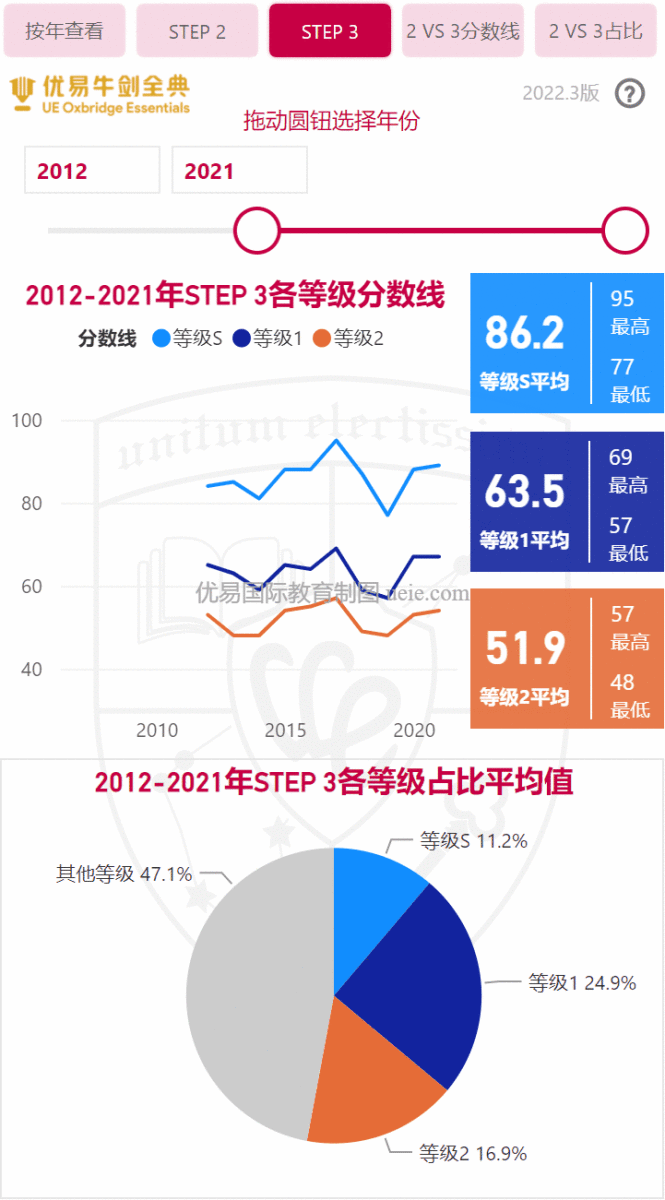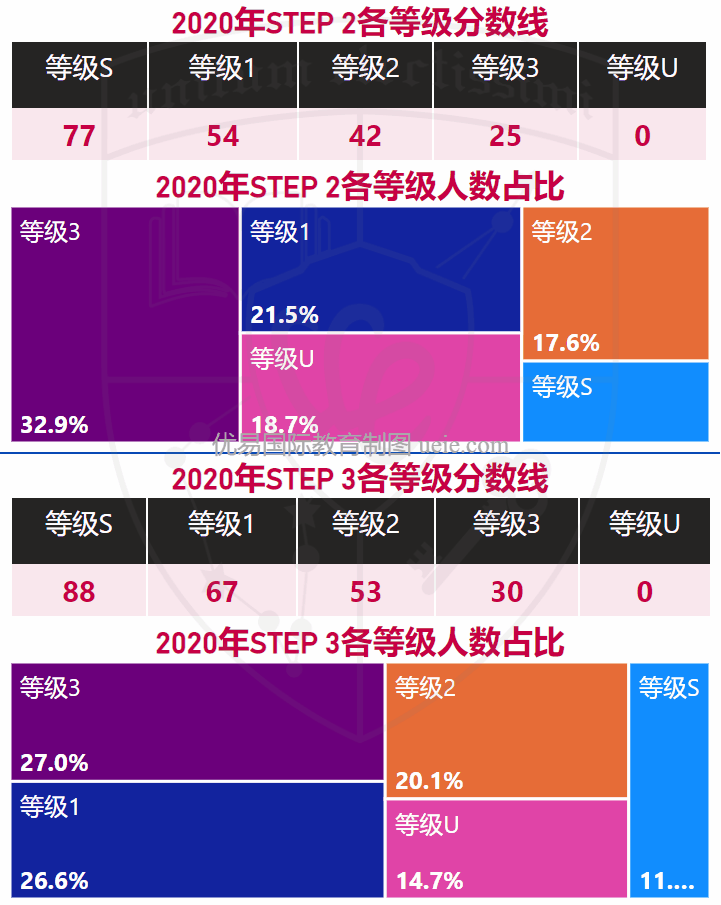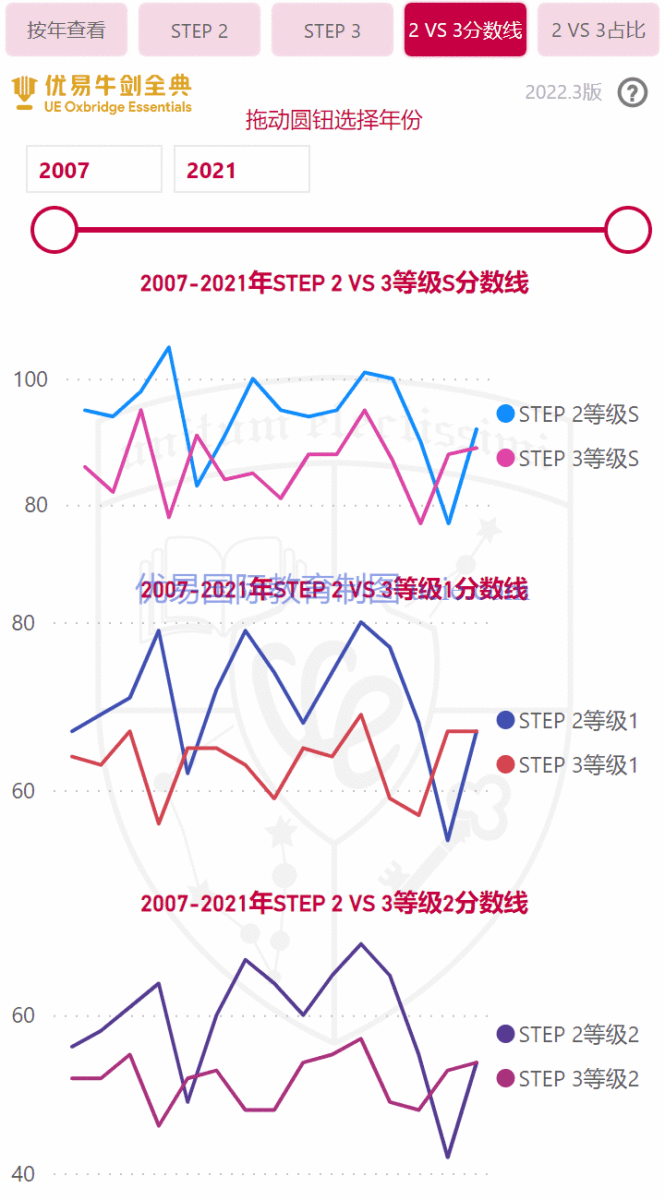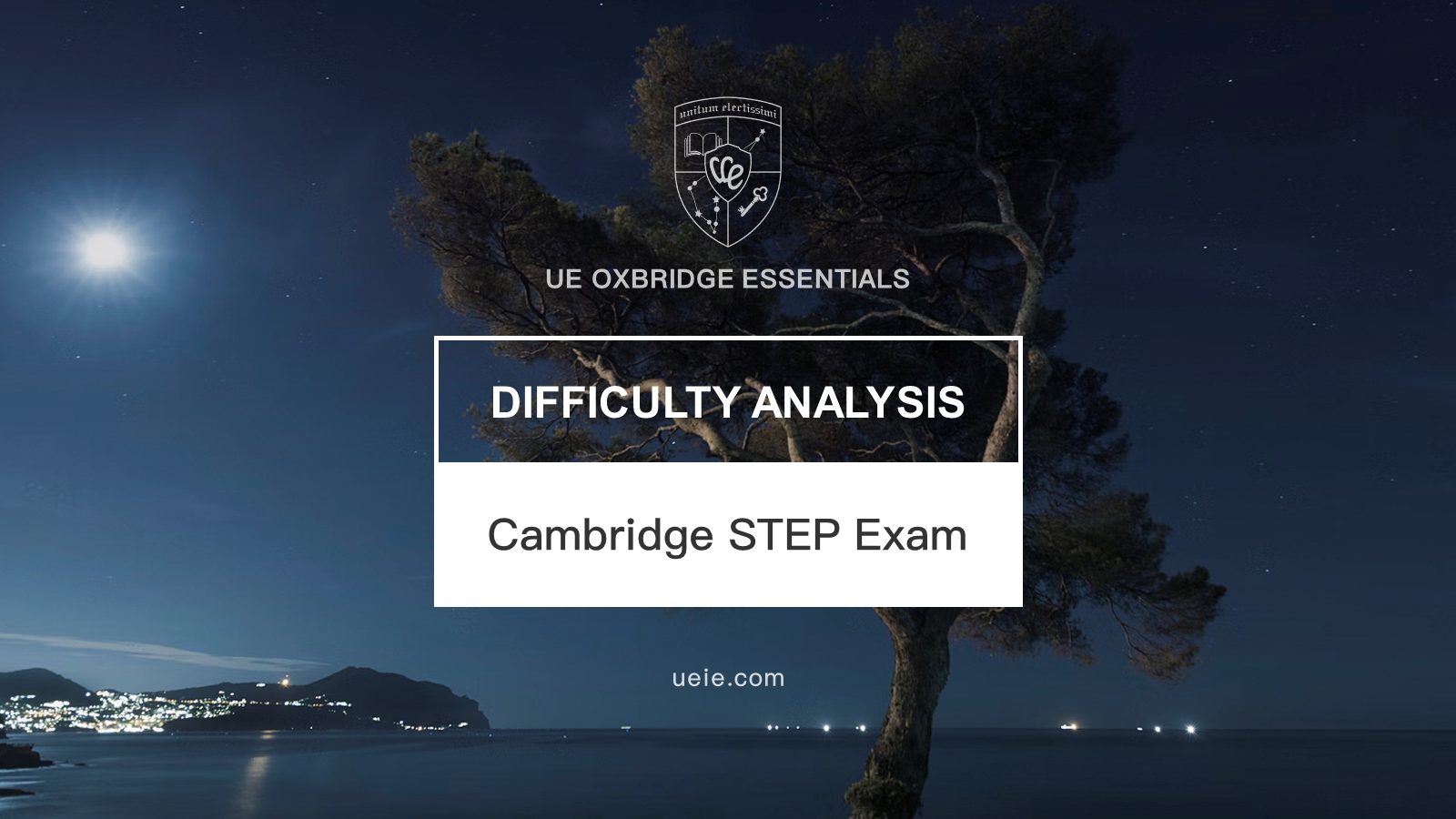This article is included in the Oxbridge Essentials® “Mathematics collection” and “Computing collection”
3-Minute Analysis of Cambridge STEP Historical Scores
I. How are the Cambridge STEP historical grades divided?
The STEP exam has a total score of 120. The grades are divided into 5 levels: S, 1, 2, 3, U. The score thresholds for each grade in STEP 2 and 3 vary each year, as does the proportion of candidates achieving each grade. Typically, the grade required for conditional admission is at least a 2 or 1, and in some cases, even an S may be required. Cambridge STEP Historical Score Line Data Analysis | Work by Teacher Xie Tao @ YouYi QuanDian

II. How many points are needed for Grade S or 1?
As shown in the graph below, over the past ten years, the average score for Grade S in STEP 2 is 93.5. The highest was 101, which occurred in 2017, and the lowest was 77, which occurred in 2020. The average score for Grade 1 in STEP 2 over the past ten years is 71.3, with the highest at 80 and the lowest at 54. Generally, a score above 95 in STEP 2 is needed to be fairly confident of achieving Grade S, and accordingly, a score above 75 is needed for Grade 1. Similarly, a score above 90 in STEP 3 generally gives a fair chance of achieving Grade S, and for Grade 1, a score above 65 is needed. Click the image below to view the Cambridge STEP historical score data and other Oxbridge written test score data.

III. Which is harder, STEP 2 or STEP 3?
As shown in the graph below, taking Grade S as an example, the score threshold for STEP 2 is higher than that for STEP 3 in the majority of years. However, this does not necessarily mean that STEP 2 is easier than STEP 3. From the perspective of the difficulty of the questions, STEP 3 covers a broader range of knowledge and seems to be somewhat harder than STEP 2, but in reality, the difficulty of the questions in both papers is quite comparable. Looking at the proportion of candidates achieving Grade S: the proportion for STEP 2 is slightly less than that for STEP 3. Additionally, a higher score threshold also means that more questions need to be answered correctly, and higher marks must be obtained for each question. Therefore, achieving the desired grade in STEP 2 is relatively harder.

IV. Will this year's STEP 2 and STEP 3 be more difficult?
The graph uses a red line to outline the trend of the score thresholds for various grades in STEP 2 and 3. It can be seen that the overall trend of the score thresholds for all grades in STEP 2 is downward. Therefore, it is expected that the difficulty of the STEP 2 exam will be on par with last year, with fluctuations not exceeding 10 points. For STEP 3, the score thresholds for all grades are relatively stable, and this year’s Grade S score threshold is estimated to be around 90 points, with Grade 1 around 65 points.
For more content related to the Cambridge STEP examination.



